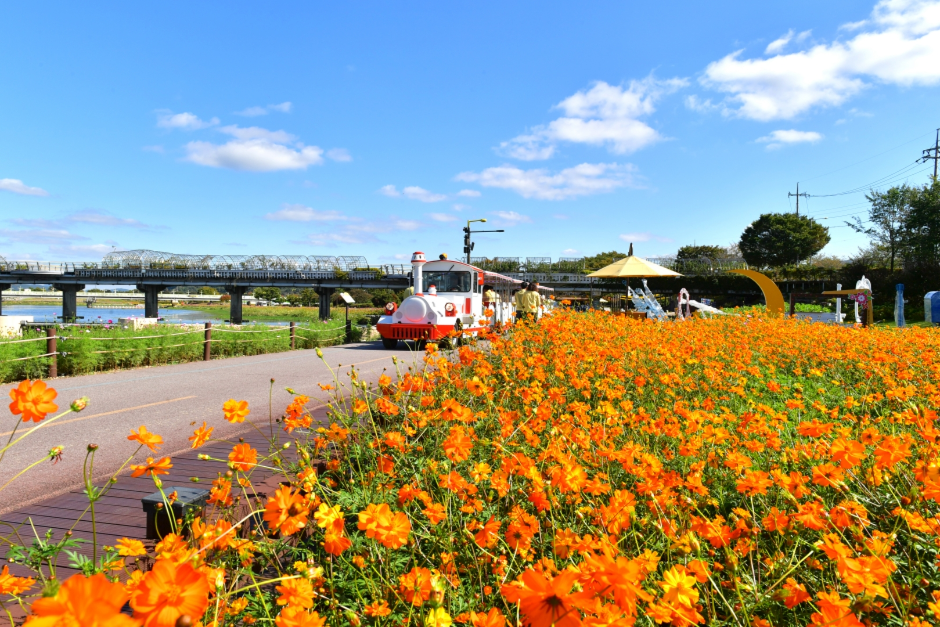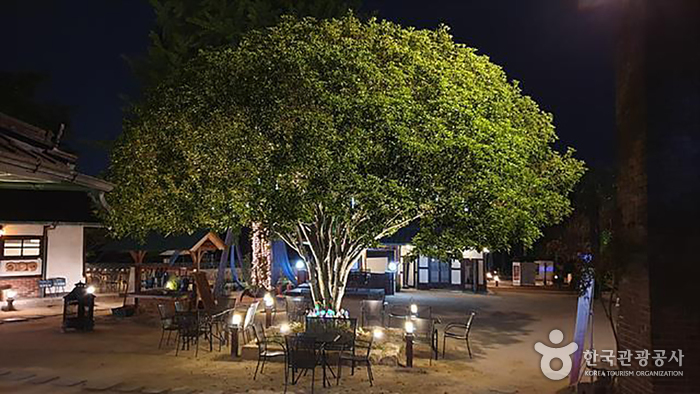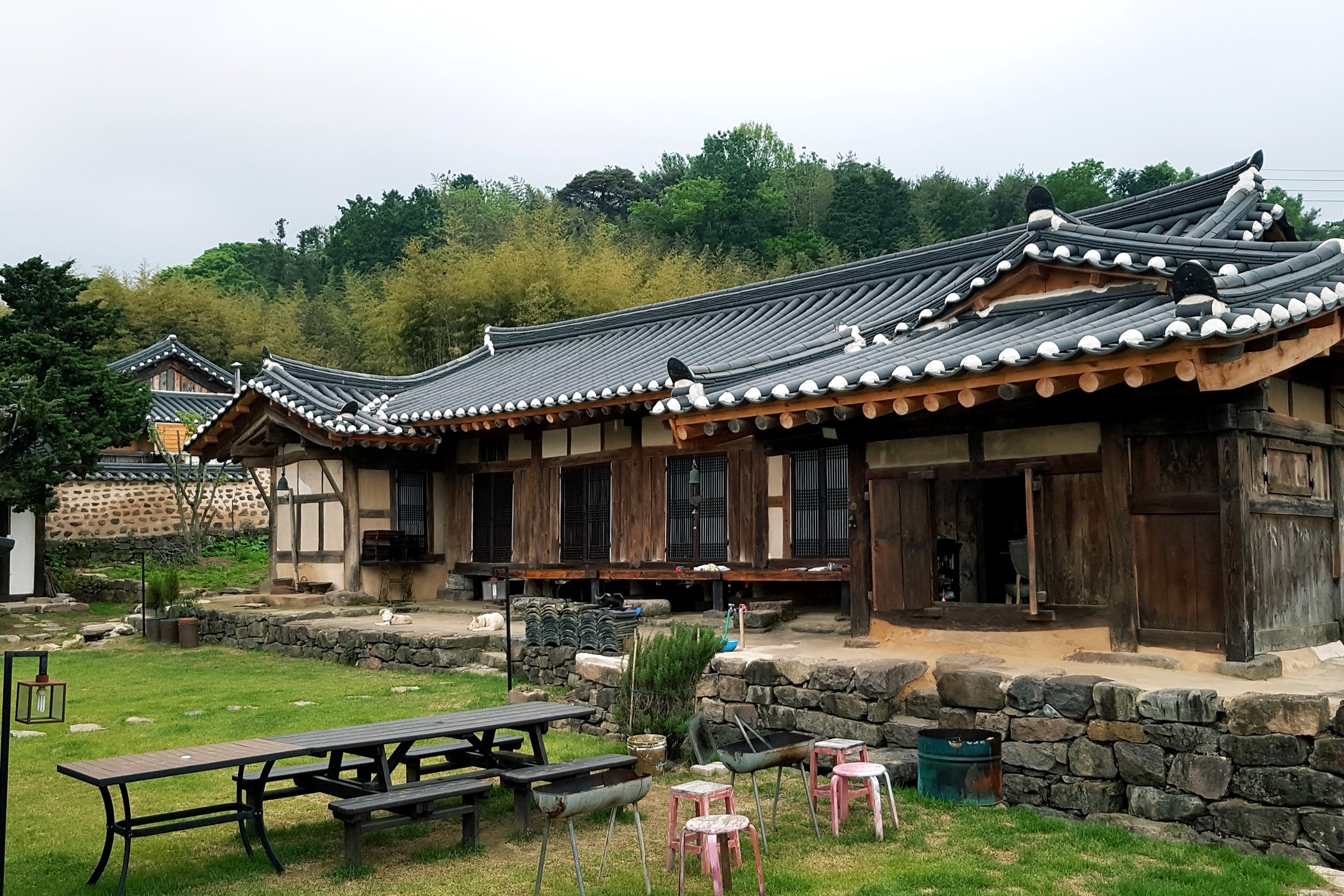Festival de Flores Gildong de Jangseong (장성 황룡강 길동무 꽃길 축제)
18.4Km 2025-03-31
Jangjae-gil 21, Jangseong-eup, Jangseong-gun, Jeollanam-do
061-390-7252
3917 Majung / 3917 마중
18.9Km 2025-08-13
42-16, Hyanggyo-gil, Naju-si, Jeollanam-do
Located in Gyo-dong, Naju-si, Jeollanam-do, 3917 Majung is a cultural space combining a hanok (traditional Korean house) cafe, modern cultural experiences, and hanok guesthouse. The name “3917 Majung” refers to its goal of “welcoming (majung) the modern culture of Naju in 1939 anew in the year 2017.” Spread out on a wide land area of 13,223 m2 are four buildings of Nanpajeong, Sarangchae, Mokseowon, and Siseoheon. All buildings take after the unique combination of Japanese- and Western-style housing commonly seen in the late Korean Empire period.
Nanpajeong is a pavilion constructed during mid-Joseon period, named after its most famous guest Jeong Seok-jin (pen-name: Nanpa), a scholar who led an uprising against Japanese imperialism in late Joseon period. There are two ondol (under-the-floor heating system) rooms in total, separated by a central wooden-floor hall (daecheong), one supporting 3 to 4 guests, one ideal for 2 to 3 guests. The restroom, which is also fitted with a shower booth, is located outside the building.
Eunhaengmok Room 1 and 2, which are housed in the Sarangchae building, are tatami rooms with balcony. Sarangchae’s shower and restroom is located in the building. Mokseowon is likewise made up of three tatami rooms, separated by open floor space and an attic. The shower and restroom is located outside the building. Siseoheon houses a 4-person room and the largest room in the complex, capable of supporting more than 10 guests. There are 2 restrooms and 2 restrooms with shower facilities, making the building ideal for group events.
Yacimiento de Dólmenes de Hwasun (화순 고인돌군 유적) [Patrimonio Cultural de la Humanidad de la Unesco]
19.5Km 2022-04-07
Hyosan-ri 64, Dogok-myeon, Hwasun-gun, Jeollanam-do.
El Yacimiento de Dólmenes de Hwasun está situado cerca de las cascadas de la cordillera que une Hyosan-ri de Dogok-myeon y Daesin-ri de Chunnyang-myeon. Según diversos estudios, 135 de las 980 rocas de Hyosan-ri en Dogok-myeon son dólmenes. También hay unas 100 rocas planas que aún mantienen su forma. En Daesin-ri de Chunnyang-myeon hay unos 124 dólmenes, de entre 3.309 rocas. Hay al menos 300 que mantienen su forma, y 23 dólmenes fúnebres. Lo que hace especiales los dólmenes de Hwasun es su abundancia, con 596 dólmenes en este pequeño distrito, incluyendo la mayor losa de Corea. El Yacimiento de Dólmenes de Hwasun fue registrado como el Patriminio Cultural de la Humanidad por la Unesco el 2 de diciembre de 2000, junto con los yacimientos de Gochang y Ganghwa.
YangDongHo Traditional House (Hanok 152) (양참사댁(양동호 가옥 / 한옥152))
19.6Km 2025-07-24
24, Darasil-gil, Dogok-myeon, Hwasun-gun, Jeollanam-do
Yangchamsa House, also known as Yangdongho House, is a hanok stay in Hwasun, Jeollanam-do - a 300-year-old yangban dwelling now designated a national folk cultural asset. There are five guestrooms of different sizes in the anchae and sarangchae. The house hosts exhibitions and concerts from time to time, and can be hired for weddings, banquets or workshops. There’s a traditional cultural experience program. Nearby must-visit places are Hakjae Old House and Hwasun Dolmen Site in the village, and Unjusa Temple (a 15-minute drive away).


![Yacimiento de Dólmenes de Hwasun (화순 고인돌군 유적) [Patrimonio Cultural de la Humanidad de la Unesco]](http://tong.visitkorea.or.kr/cms/resource/03/2515703_image2_1.jpg)

 Español
Español
 한국어
한국어 English
English 日本語
日本語 中文(简体)
中文(简体) Deutsch
Deutsch Français
Français Русский
Русский